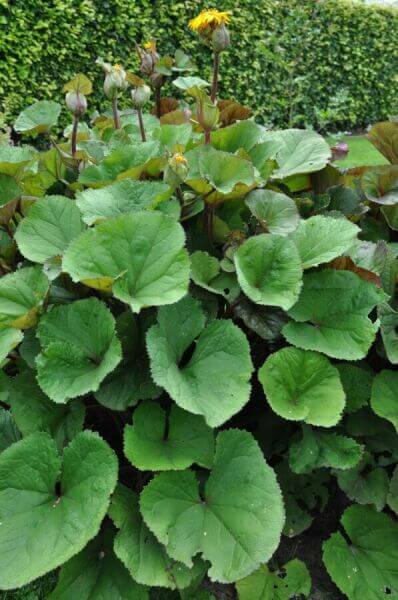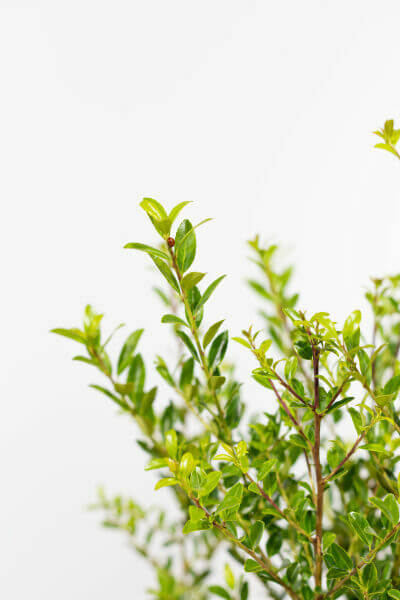Hedging Plants For Wind Protection
Boost your garden's allure with rich hedge varieties such as Yew (Taxus), Thuja, Laurel, Photinia, and Bamboo, commemorated for their structural stability and environmental benefits.
Yew and Thuja offer evergreen coverage and winter season strength, while Laurel provides rapid development and broad, fragrant leaves.
Photinia includes seasonal charm with its dynamic red foliage, and Bamboo provides a low-maintenance, serene ambiance.
These hedges enhance air quality, lower sound, and create tranquil, personal spaces.
Proper planting, spacing, and upkeep ensure energetic growth and ecological consistency.
Explore how these rich ranges can raise your garden's charm and wellness.
Secret Takeaways
Transform Your Garden With Lush Hedge Ranges
- Select Yew for its thick, evergreen development and unparalleled durability.
- Go with Laurel for its fast development and broad leaves, ensuring quick personal privacy.
- Pick Photinia for its vibrant seasonal foliage, which turns a striking dark red.
- Utilize Bamboo for a low-maintenance, winter-hardy hedge with visual appeal.
- Area plants 2-3 per meter and prune frequently for optimum development and health.
Popular Hedge Plants
When transforming a garden with rich hedge ranges, it's important to consider popular hedge plants such as Yew, Thuja, Laurel, and Photinia due to their distinct qualities and advantages.
Yew (Taxus) is extremely esteemed for its longevity and dense, green growth, making it a prime option for withstanding landscapes.
Thuja is kept in mind for its evergreen foliage and robust winter season durability.
Photinia adds seasonal vibrancy with red leaves that darken in time, producing dynamic visual appeal.
Laurel offers rapid development and aromatic, broad leaves, ideal for fast personal privacy.
In Addition, Bamboo is an exceptional option for atmosphere, providing a low-maintenance, winter-hardy option that enhances the garden's visual with its sophisticated, swaying walking sticks.
These selections cater to a range of horticultural requirements and preferences.
Benefits of Garden Hedges
Garden hedges offer a multitude of advantages, making them an important addition to any landscape. These natural barriers are affordable to implement and supply considerable wind protection, boosting air flow and contributing to sound reduction. The dense foliage of hedges like Thuja and Beech makes sure privacy by blocking exposure, creating a tranquil and secluded environment.
Hedges also play a vital role in microclimate guideline, offering a stable environment that promotes plant growth and lessens temperature variations. Their elaborate leaf structures filter toxins, improving air quality and adding to a healthier garden community.
Moreover, hedges master sound reduction, soaking up and deflecting sound waves to lower ambient sound levels. This double functionality of supplying both visual and acoustic personal privacy enhances the general serenity and visual appeal of any garden.
Planting and Maintenance Tips
For a successful hedge, precise preparation of the planting area is vital. Ensure the soil has appropriate pH and drain to support strong root development.
Area the plants appropriately for the picked species. Water the hedge frequently throughout its initial growth stage, changing as required with seasonal modifications.
Implement a methodical bug control and disease prevention technique, utilizing organic or chemical treatments when essential. Routinely examine for aphids, termites, and fungal infections.
Apply mulch to retain moisture and suppress weeds. Seasonal pruning promotes thick development and air blood circulation, essential for plant health.
Following these guidelines will help you cultivate a lively, properly maintained hedge that enhances the beauty of your garden.
Spacing and Cutting Standards
Spacing and Cutting Guidelines
Proper spacing and trimming are crucial for cultivating healthy, aesthetically appealing hedges. Appropriate spacing makes sure each plant gets sufficient nutrients, light, and air flow.
Follow these guidelines for optimal hedge maintenance:
- Spacing: Position hedge plants 2-3 plants per meter to motivate robust development.
- Pruning Strategies: Routine pruning is essential for keeping desired hedge height and shape. Trim new development in summer and cut down older wood throughout winter season.
- Seasonal Care: Adjust trimming techniques and schedules according to seasonal requirements to guarantee plant health.
- Hedge Height: Routinely monitor and trim to keep the wanted hedge height and accomplish uniform aesthetic appeals.
Adhering to these steps will guarantee your hedge prospers, improving both the appeal and functionality of your garden.
Choosing the Right Hedge
Picking the Right Hedge
Choosing the suitable hedge involves examining elements such as mature height, foliage density, and ecological durability. Successful hedge plant choice requires understanding each types' growth characteristics and site-specific flexibility.
For example, Yew (Taxus) uses outstanding longevity and thick growth, while Thuja is significant for its winter strength. Furthermore, considering upkeep requirements is crucial; fast-growing types like Laurel or Privet demand routine trimming, whereas low-maintenance options like Bamboo or Ivy may be more suitable for those looking for minimal maintenance.
Environmental elements such as soil type, light availability, and wetness conditions should also assist the selection procedure. This careful method makes sure the chosen hedges will prosper, providing both visual and practical advantages to the garden landscape.
Delivery and Planting Advice
To guarantee your hedge plants grow, they ought to be provided by specialized carriers and planted immediately upon arrival.
Follow these essential steps for effective planting:
- Soil Preparation: Improve the soil with organic matter to improve drain and nutrient content.
- Planting Depth: Produce a trench two times the width and equal to the depth of the root ball.
- Watering Methods: Water completely after planting, keeping the soil regularly moist but not filled.
- Mulching: Apply a layer of mulch to keep wetness and reduce weeds.
Consumer Support and Service
Given the essential role of prompt support in horticultural pursuits, our client assistance group is readily available 6 days a week through telephone, email, and social media to offer expert recommendations and quickly attend to any issues. Their devotion to fast action times makes sure consumer satisfaction by resolving queries related to plant health, optimal planting methods, and maintenance schedules.

Interaction Approach
Within 24 hr
This comprehensive support system, strengthened by an outstanding 9.3/ 10 consumer ranking, highlights our dedication to boosting the gardening experience for every client.
Frequently Asked Questions
How Long Does It Take for Hedge Plants to Establish?
Hedge plants usually require one to three years to become completely established, with the precise duration varying by species and growing conditions.
Effective care during this crucial period is important for robust development. Constant watering, alert weed control, and appropriate fertilizer application are pivotal in promoting strong root development.
For example, fast-growing species like Laurel might develop faster, while slower-growing ranges such as Yew might take longer. Diligent maintenance speeds up the facility procedure, resulting in dense and healthy hedges.
What Are the Finest Hedge Plants for Personal Privacy?
The question of the very best hedge plants for privacy includes examining evergreen and deciduous choices.
Evergreen hedges like Thuja, Laurel, and Cypress supply year-round coverage, ensuring constant personal privacy.
In contrast, deciduous hedges such as Beech offer seasonal personal privacy, shedding leaves in chillier months.
Key upkeep ideas for privacy hedges consist of routine trimming, fertilizing in spring, and correct spacing-- usually 2 to 3 plants per meter.
Furthermore, constant watering and persistent weed removal are vital for promoting healthy, dense growth.
Can Hedge Plants Draw In Wildlife to My Garden?
Yes, hedge plants can attract wildlife to your garden by supplying important advantages like shelter, food, and nesting websites, thereby boosting local biodiversity. Yew, holly, and laurel are excellent for bring in birds, while ivy supports a variety of bugs.
However, it is very important to keep in mind that there are some disadvantages, such as increased maintenance to manage insects and regular upkeep. Thoroughly selecting and preserving hedge varieties can help stabilize these benefits and disadvantages, ultimately promoting a lively and sustainable community in your garden.
Exist Any Flowering Hedge Plants Available?
Yes, there are flowering hedge plants offered that can boost the beauty of your garden.
For example, Elaeagnus, also called Olive Willow, produces aromatic white flowers in the fall, adding a touch of elegance.
Photinia, another popular choice, showcases lively red leaves that grow into a rich green, creating a dynamic visual impact throughout the seasons.
To make sure these plants grow, it's important to practice appropriate pruning methods and seasonal upkeep, such as cutting brand-new development in the summer season and cutting back in the winter.
These measures will help preserve the health and aesthetic appeal of your blooming hedges.
How Do I Avoid Insects in My Hedge Plants?
To avoid insects in hedge plants, utilize natural insect control approaches and keep correct hedge care. hedging plants Present helpful pests like ladybugs, which victimize damaging bugs, to develop a well balanced environment.
Routinely examine your hedges for signs of problem and without delay get rid of any afflicted parts to avoid the spread. Guarantee the health of your hedges by applying balanced fertilizers and providing appropriate water.
Make use of mulching to keep soil moisture and proper spacing to reduce plant stress and promote robust development. These practices jointly help in reducing pest concerns and keeping a healthy hedge.
Conclusion
In essence, selecting the right hedge ranges such as Yew, Thuja, and Laurel can change any garden into a peaceful haven. These plants supply year-round plant, enhance visual appeal, and deal practical advantages like noise reduction and wind defense.
Appropriate planting techniques, precise spacing, consistent watering, and seasonal trimming are crucial for ideal growth.
Reliable shipment services and professional consumer support make sure a smooth experience from purchase to planting, making it easier than ever to raise your outdoor area.
Garden hedges provide a wide variety of benefits, making them an important addition to any landscape. These natural barriers are cost-efficient to execute and supply considerable wind defense, boosting air flow and contributing to sound reduction. The thick foliage of hedges like Thuja and Beech guarantees personal privacy by obstructing presence, creating a secluded and peaceful environment.

Pruning Techniques: Routine pruning is essential for keeping preferred hedge height and shape. Trim brand-new development in summer and cut back older wood throughout winter.
Comments on “Best Hedging Plants For Garden Privacy”